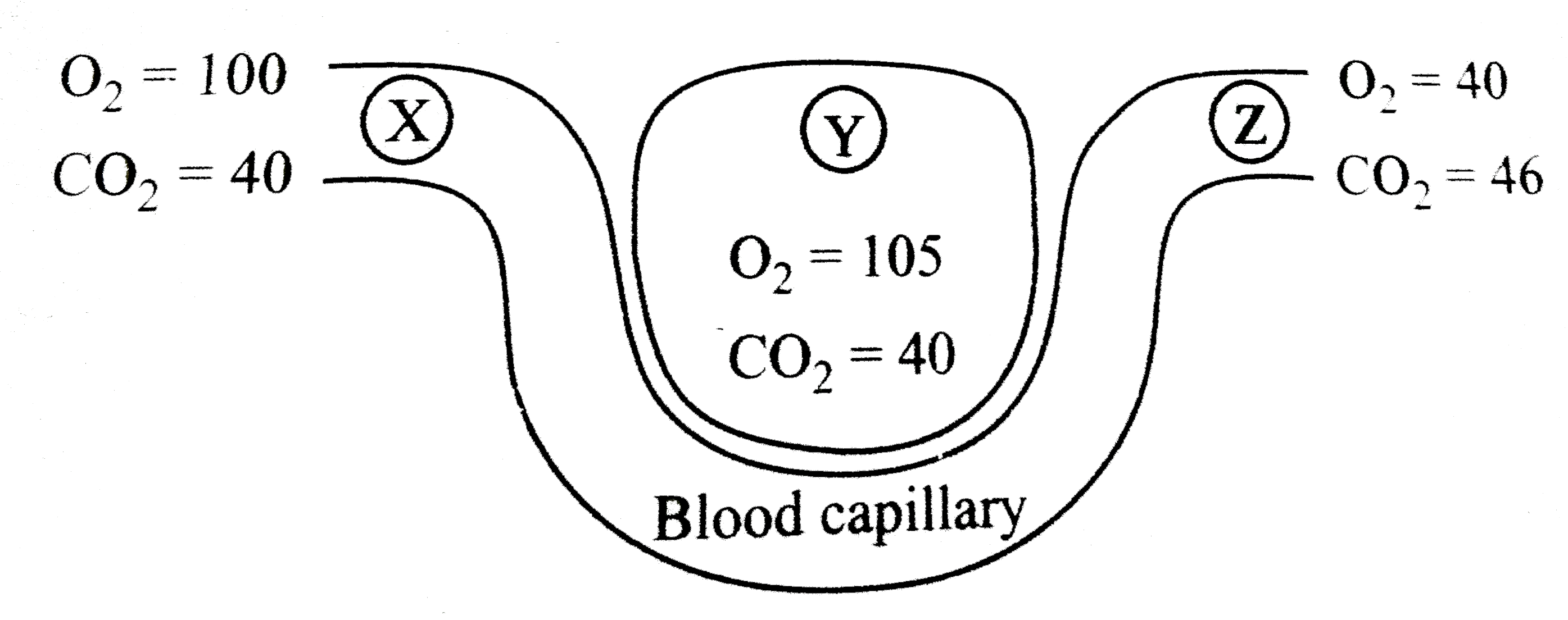Bulk of carbon dioxide (CO2) released from body tissues into the blood is present as
bicarbonate in blood plasma and rbcs
free cO2 in blood plasma
70% carbamino haemoglobin and 30 % as bicarbonate
carbamino haemoglobin in RBCs
The correct Answer is:A
To answer the question regarding how the bulk of carbon dioxide (CO₂) released from body tissues into the blood is present, we can follow these steps:
1. Understanding Carbon Dioxide Transport: Carbon dioxide is produced in the tissues as a byproduct of cellular respiration. Once produced, it needs to be transported to the lungs for exhalation.
2. Modes of Transport: CO₂ is transported in the blood in three main forms:
- As bicarbonate ions (HCO₃⁻)
- As carbamino compounds (bound to hemoglobin)
- Dissolved in plasma
3. Bicarbonate Formation: The majority of CO₂ (approximately 70%) is converted into bicarbonate ions in the red blood cells (RBCs). This reaction is catalyzed by the enzyme carbonic anhydrase, which facilitates the conversion of CO₂ and water into carbonic acid (H₂CO₃), which then dissociates into bicarbonate and hydrogen ions.
4. Carbamino Compounds: About 20-30% of CO₂ binds to hemoglobin and other proteins to form carbamino compounds. This process involves the binding of CO₂ to the amino groups of hemoglobin, forming carbaminohemoglobin.
5. Dissolved CO₂: A small percentage (around 5-10%) of CO₂ is transported dissolved directly in the plasma.
6. Conclusion: Given that the bulk of CO₂ is present as bicarbonate ions in the blood plasma and red blood cells, the correct answer to the question is that the majority of CO₂ released from body tissues into the blood is present as bicarbonate.
Final Answer:
The bulk of carbon dioxide (CO₂) released from body tissues into the blood is present as bicarbonate in blood plasma and RBCs.
---
- As bicarbonate ions (HCO₃⁻)
- As carbamino compounds (bound to hemoglobin)
- Dissolved in plasma
The bulk of carbon dioxide (CO₂) released from body tissues into the blood is present as bicarbonate in blood plasma and RBCs.
Topper's Solved these Questions
Similar Questions
Knowledge Check
The given diagram shows a blood capillary in close contact with structure Y. The relative concentration (in units) of carbon dioxide (CO2) and oxygen (O2) are given at three different sites.

Which of the following statements is correct ?Aa) Y is an alveolus and blood flow is from X to ZBb) Y is an alveolus and blood flow is Z to XCc) Y is a muscle and blood flow is from X to ZDd) Y is a muscle and blood flow is from Z to XMost carbon dioxide in blood is in the form of:
Acarbon dioxideBcarbonic acidCcarbon monoxideDhydrogencarbonateThe carbon dioxide is transported via blood to lungs mostly
Ain combination with haemoglobin onlyBdissolved in blood plasmaCin the form of bicarbontesDas carbaminohaemoglobin.
Carbon dioxide is carried in the blood mainly as
View SolutionWhich of the following statements are true/false
A.The blood transports CO2 comparatively easily because of its higher solubility
B.Approximately 8.9% of CO2 is transported being dissovled in the plasma of blood
C. The carbon dioxide produced by the tissues, diffuses passively into the blood stream and passes into red blood corpsucles and react with water to form H2CO3
D.The chlorde ions diffuse from palsma into the erythrocytes to maintain ionic balance
View SolutionDescribe the various ways by which carbon dioxide is transported by the blood from the tissues to the alveoli.
View SolutionCalculate :
the volume measured at S.T .P. of carbon dioxide released when 8.40 g of sodium hydrogen carbonate is decomposed according to the equation :
2NaHCO3→Na2CO3+H2O+CO2
(Na = 23, H = 1, C = 12, O = 16)
View SolutionCalculate :
the mass measured at S.T .P. of carbon dioxide released when 8.40 g of sodium hydrogen carbonate is decomposed according to the equation :
2NaHCO3→Na2CO3+H2O+CO2
(Na = 23, H = 1, C = 12, O = 16)
View Solution